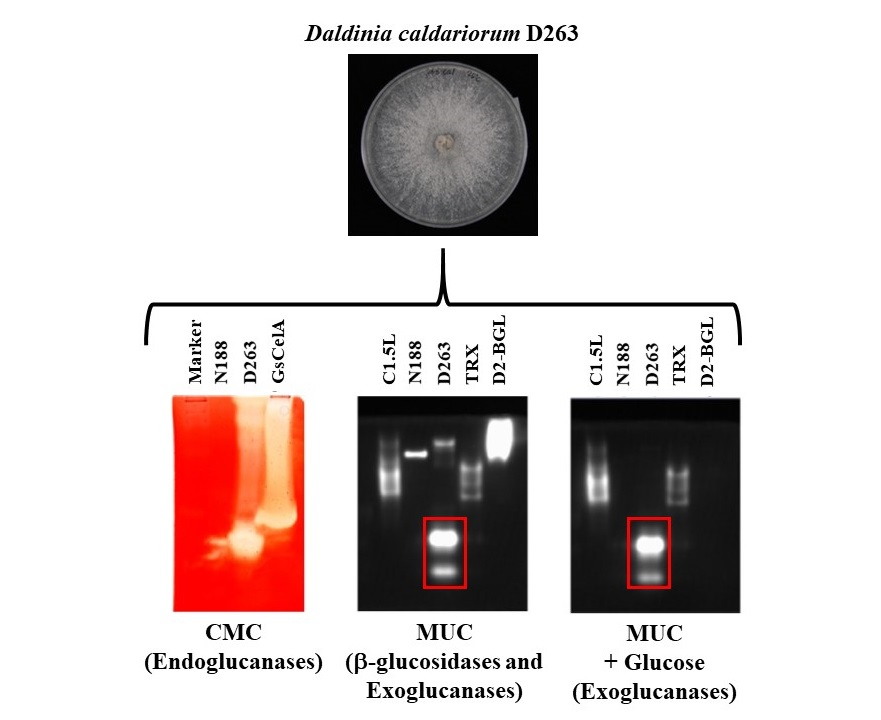[Tuan-Hua David Ho] An endophytic fungus Daldinia caldariorum D263 that can serve as a potential source of bioactive cellulolytic enzymes
POST:Lignocellulolytic enzymes are especially useful for agricultural waste disposal and biofuel production by catabolizing lignocellulose into fermentable sugars. However, most commercial cellulase mixtures are derived from fungal secretions that only contain limited range of highly bioactive cellulolytic enzymes. Although zymography can be used to screen for active cellulases from fungal secretions, it is difficult to separate b-glucosidase (BGL) activity from exoglucanase activity because both enzymes react to the same substrates. Dr. Tuan-Hua David Ho’s laboratory has discovered that the secretion of an endophytic fungus, Daldinia caldariorum D263*, contained a complete set of active lignocellulolytic enzymes. Taking advantage of the unique product inhibition property of BGLs, the exoglucanase activity can be clearly detected in zymography with minimum interference of BGL activity. The analysis of the assembled D263 genome has revealed that D263 encodes more than 100 potential lignocellulolytic enzymes that are distinct from commercial cellulase producing species Trichoderma reesei and Aspergillus niger. With successful identification of bioactive cellulases by mass spectrometry, the information provided from this research suggests that D263 can secret a wide variety of lignocellulolytic enzymes for complete cellulose digestion. The research will also be valuable for identifying and improving novel cellulolytic enzymes that have high potential for biofuel production.
*The fungi used in this study were kindly provided by Dr. Yu-Ming Ju
https://biotechnologyforbiofuels.biomedcentral.com/articles/10.1186/s13068-021-01959-1
